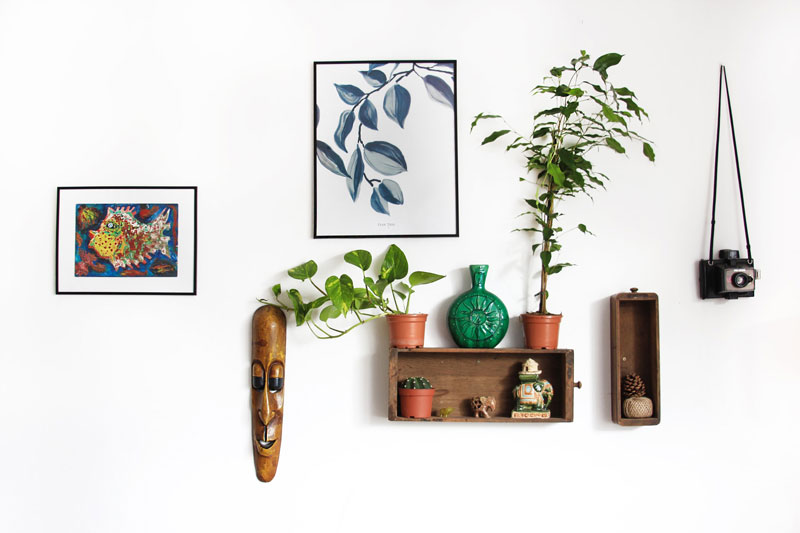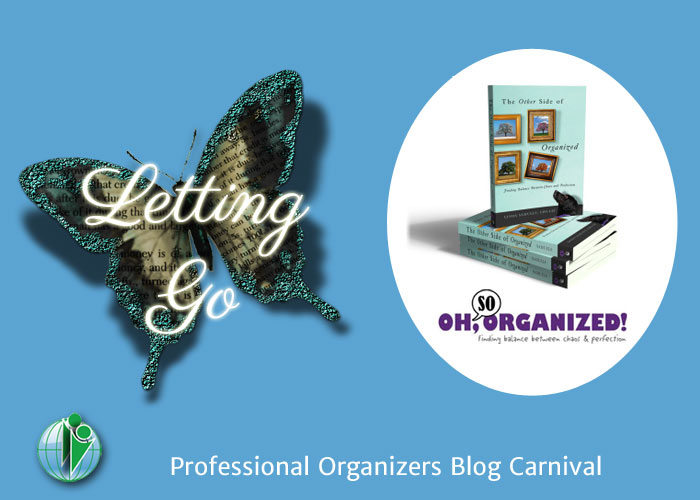How to Create a Curated Home and Minimize Mess
This page may contain links to Amazon.com or other sites from which I may receive commission on purchases you make after clicking on such links. Read my full Disclosure Policy

Professional organizers have the tough job of helping people declutter their belongings so everything can get and stay in order. Whether they’re trying to preserve precious memories or clean up a spare bedroom, clients sometimes need help deciding how to organize a room with too much stuff. One good approach is treating their belongings like a curated collection.
Museum professionals understand just how curation works. Their collections aren’t overflowing with objects. Instead, curators carefully choose each piece for its interesting features or the larger role it plays in the exhibition. By showing clients how to treat their possessions the same way, an organizer can help them whittle down their “collection” to only items they need.
What Does a Museum Curator Do?
Do you ever wonder who creates museum displays? The answer is often a museum curator, a person who acquires, preserves, and exhibits historical or artistic relics. From the Latin cura, the word curate means “to care for.” Like a curator, a professional organizer cares for the artifacts of people’s lives, clearing clutter, sorting out valuable or useful items, and displaying them for everyone’s enjoyment.
What is a Curated Home?
Some people have negative reactions to the word curate, as if curated home decor means the sterile perfection of an art gallery or magazine cover. The good news is your clients don’t have to feel like they’re living in a museum to benefit from a curated home. Turning a caring eye on messy areas can help you arrange them to suit a family’s needs and reflect their interests.
Presenting the job of tackling clutter as caring and curating can help even resistant clients embrace organization. Hoarders might realize their clutter storage habits are damaging items they want to protect. Likewise, properly storing or displaying special pieces from a loved one’s estate is a healthy way for grieving clients to give keepsakes new life.
How to Organize a Room: Tips to Approach a Collection like a Curator
1. Select a Theme or Tell a Story
When curators pick artifacts for an exhibit, they look for pieces that fit together to tell a story or provoke an emotion. Monty Preston, an associate curator at Saatchi Art, offers this tip to think like a curator: “figuring out what mood you want a room to evoke will help you select works that embody the right energy. Do you want to feel energized when you walk into that space? Relaxed? Inspired?”
Talk through what clients want from each room. If they dream of a stylish, functional kitchen, remove items that don’t tell that story. Help them sort mail and bills on the countertop, organize cabinets to prevent overflow, and toss mismatched containers and lids. This will leave room for pieces that fit their desired aesthetic, such as a chic cutting board or potted herbs.
2. Choose Display Pieces
Curators designing a modern art exhibit don’t include every abstract painting the museum owns. They select a few pieces, leaving plenty of space in the gallery to make each work feel important. In the same way, having a curated home means only displaying what’s special. Try these methods to cut clutter and create room for favorite belongings to shine:
- Limit multiples of the same item: If chargers and cords are taking over the living room, it’s time for an audit. What is each charger’s purpose? Can one work for multiple devices? Once you pare down a collection to the essentials, give those items a home. A dedicated charging station puts all their devices in one place, clearing clutter and making it easier to find the right cord.
- Choose a representative for larger collections: Clients may struggle to let go of keepsakes, even big sets that rarely see the light of day. To free up space and help them enjoy mementos more, choose a few pieces to display and donate the rest. For instance, help clients remember their big day without filling an entire cabinet by turning a platter from unused wedding china into mantle decor.
- Rethink display strategy: When clients insist on keeping their collection, try to reduce the amount of clutter storage Become a digital curator by scanning, storing, and backing up photos, paperwork, children’s artwork, or other archives on an external hard drive. Old photos may get more views in a digital frame that scrolls through cherished pictures.
3. Guide People Around the Space
Museum curators want visitors to take a specific path through an exhibit and notice pieces in a particular order, and they use all kinds of tricks to do this. Curators might put explanatory text on a bright accent wall or surround an important anchor piece with smaller items to draw the eye to the star of the show.
Knowing how to organize a room gives you the same powers of persuasion. If clients want the family to focus on conversation rather than screens, position couches and chairs to face each other instead of the television. Want kids to use hooks for their coats and backpacks? Place them on a wall in clear view of the entry door.
4. Invite Engagement
Beyond just exhibiting artifacts, museum design helps visitors connect with the art or history on display. Like cubist paintings or ancient scrolls, tidying up may not be everyone’s cup of tea. But, by explaining to clients how to arrange their space to reflect their personality, you can make organizing fun and show them how useful curated decor can be.
A clutter curator’s job is to organize spaces to embody a client’s life and invite family and guests to engage with that story. One effective way to do this is by using favored objects as featured decor. Framed records or a display box full of concert ticket stubs show off a client’s collection and encourage discussion about their interests and experiences.
Curated Home Design
Just like a museum exhibition, every house tells a story. Disorderly rooms can radiate chaos and stress. On the other hand, a curated space organized to fit a family’s needs serves as a comfortable refuge, a place where everyone feels cared for and truly at home.
Photo by Manja Vitolic on Unsplash











I love the angle of this piece. I have never before thought about using the word curate to describe what a professional organizer does but it really fits. Thank you for giving me this new perspective.
I’ve used the word curate with memorabilia organizing. Especially with growing children, what mattered when they were little won’t matter as much when they are teenagers. When the memorabilia bin is bursting, that is a good time to review and curate it so only the best and most meaningful items are kept. It’s a helpful way to think about deciding what to keep and what to shed.
I love this! After all, memorabilia is like a private museum, isn’t it? Or it could be, if well curated!
I usually talk with clients who won’t give up the mass of a particular type of item they consider a “collection” by approaching it as a curated exhibit. We select the favorites, or the favorites *for now* while creating more reasonable, logical storage. I explain the concept of rotating exhibits; for example, a client who collects figurines may appreciate them more if we only display the summery looking ones during warmer weather months, the more autumnal-themed ones in the fall, and so on. Hazel’s right that displaying the favorites and donating/selling the rest may work, but when it does not, displaying the best in a theme or current preference and storing the rest in a more logical way at least keeps visible clutter at bay.
I love this approach!
Your approach is wonderful. I was very excited the first time I saw one of those picture frames where you can store children’s artwork, bringing a different one forward whenever you (or the child) want a change. I think those are great!
I like this take on organizing a home. It takes a more thoughtful approach to the end result, and even leaves room for rotating favorite items, as some museums sometimes do.
I think that ability to rotate items might make some people more willing to not have everything out on display, don’t you?
I love the word “curate.” It’s more inviting and creative than “edit,” which I tend to use. It also speaks to the nature of choosing what we like or love rather than letting go of what we don’t want. So it places a positive spin on purpose. And I suppose whether we “curate” our spaces or not, our rooms DO tell a story. It may just not be the story we actually want to tell. Being intentional is a great idea!